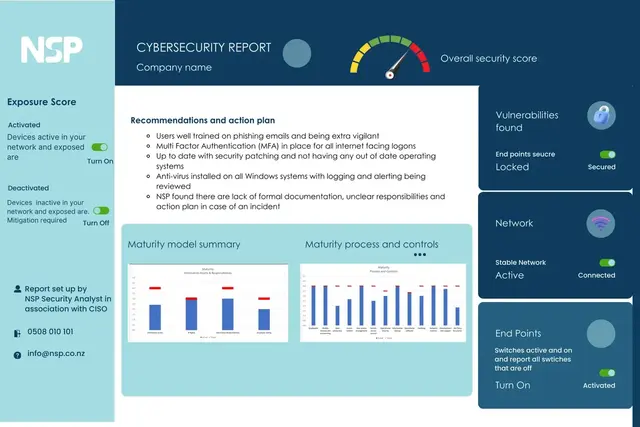
In an era where seamless connectivity underpins every aspect of business operations, the importance of a robust and secure network cannot be overstated. Organizations must ensure their networks are efficient, scalable, and resilient against evolving cyber threats. Networking roadmaps provide a clear, strategic framework to achieve these goals, aligning network infrastructure with business objectives while optimizing performance and security.
What is a Networking Roadmap?
A networking roadmap is a strategic plan designed to outline the development, optimization, and security of an organization’s network infrastructure over time. It combines a deep understanding of current network capabilities, future needs, and technological advancements to create a structured pathway for achieving optimal performance and security.
Key Components of a Networking Roadmap
- Assessment of Current Network Infrastructure:
A detailed analysis of the existing network to identify strengths, weaknesses, and areas for improvement. - Defined Objectives:
Clearly outlined goals such as reducing latency, enhancing bandwidth, or bolstering cybersecurity defenses. - Technology Selection:
Evaluating and incorporating the latest technologies, such as SD-WAN, Wi-Fi 6, or Zero Trust Architecture, to enhance network capabilities. - Implementation Phases:
A step-by-step plan for rolling out changes, ensuring minimal disruption to operations. - Monitoring and Maintenance:
Continuous evaluation to ensure the network remains efficient, secure, and adaptable to new challenges.
Benefits of a Strategic Networking Roadmap
- Enhanced Network Performance
Strategized upgrades improve bandwidth, reduce latency, and ensure reliable connectivity, supporting critical business applications and services.
- Proactive Security Measures
A roadmap incorporates advanced security protocols and regular updates to protect against evolving cyber threats such as ransomware, DDoS attacks, and insider threats.
- Cost Efficiency
By prioritizing investments and eliminating unnecessary expenses, networking roadmaps ensure cost-effective upgrades and maintenance.
- Scalability
As businesses grow, their network demands increase. A well-planned roadmap ensures the network can scale seamlessly to meet future needs.
- Regulatory Compliance
Networking roadmaps integrate compliance with industry-specific standards, such as GDPR, HIPAA, or ISO 27001, reducing the risk of legal and financial penalties.
Steps to Build an Effective Networking Roadmap
- Understand Business Objectives
Align network goals with organizational priorities, such as enabling remote work, supporting IoT devices, or enhancing customer experiences.
- Conduct a Network Audit
Evaluate current infrastructure, including hardware, software, and security protocols, to identify gaps and potential vulnerabilities.
- Set Clear Goals
Define measurable objectives, such as reducing network downtime by 50% or achieving 99.99% uptime within a year.
- Leverage Advanced Technologies
Incorporate modern networking solutions such as:
- Software-Defined Networking (SDN): Enables centralized control and dynamic optimization.
- Zero Trust Architecture: Ensures secure access based on user identity and context.
- Cloud Networking: Enhances flexibility and scalability for hybrid and remote workforces.
- Develop a Phased Implementation Plan
Break down the roadmap into manageable phases, minimizing disruption and allowing for incremental improvements.
- Continuous Monitoring and Upgrades
Regularly review network performance and security metrics, incorporating updates as technologies and business needs evolve.
Technologies Powering Networking Roadmaps
- Wi-Fi 6 and 6E:
Offer faster speeds, improved capacity, and reduced latency for high-demand environments. - 5G Networks:
Enable ultra-low latency and higher bandwidth for mobile and IoT applications. - AI and Machine Learning:
Automate network monitoring and threat detection, ensuring quicker responses to anomalies. - Network Segmentation:
Enhances security by isolating critical assets from less secure areas of the network. - Next-Generation Firewalls (NGFWs):
Combine traditional firewalls with advanced features like application awareness and deep packet inspection.
The Role of Networking Experts
Creating and implementing a networking roadmap requires specialized expertise. Networking consultants and managed service providers (MSPs) bring:
- Technical knowledge: Expertise in the latest networking technologies and trends.
- Customized solutions: Tailored roadmaps based on an organization’s unique needs.
- 24/7 Support: Proactive monitoring and rapid issue resolution to maintain performance and security.
Conclusion
A strategically crafted networking roadmap is essential for businesses looking to optimize performance, enhance security, and future-proof their network infrastructure. By aligning technology investments with organizational goals and leveraging cutting-edge innovations, organizations can ensure seamless operations and robust protection against cyber threats.
Investing in a well-defined networking roadmap today not only addresses current challenges but also positions your business for success in an increasingly connected world. Partner with networking experts to build a roadmap that delivers performance, security, and peace of mind.
Contact US:
Website :- https://nsp.co.nz/
Email id :- sales@nsp.co.nz
contact :- 0508010101Top of Form







